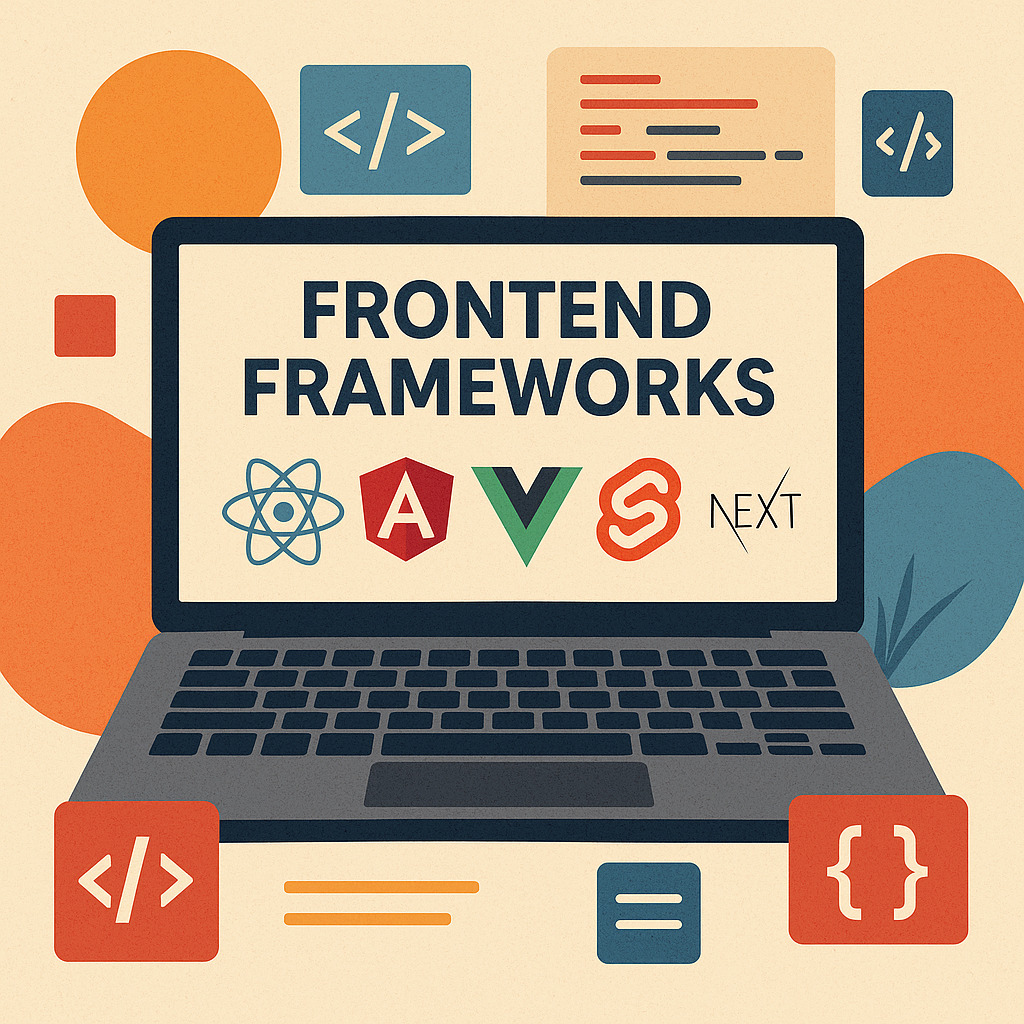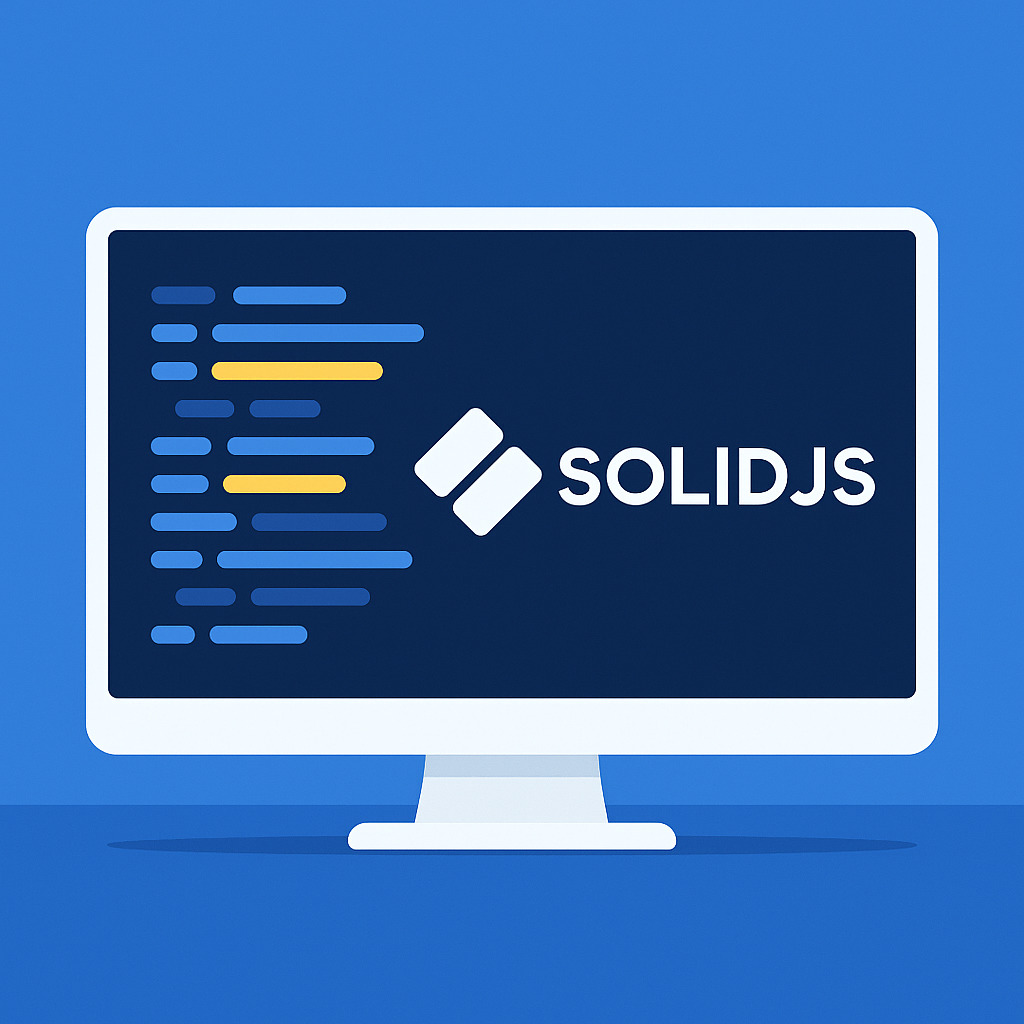Top Frontend Frameworks in 2025
- 1 min read
Discover the top frontend frameworks in 2025 including React, Vue, Angular, SvelteKit, and SolidJS. Learn which framework best suits your project based on scalability, performance, and developer experience.

In the ever-evolving world of web development, choosing the right frontend framework can be the difference between a successful project and one riddled with performance and maintenance issues. As we step into 2025, developers have more powerful tools than ever to build fast, responsive, and scalable web applications.
In this post, we’ll explore the top frontend frameworks in 2025, evaluating their pros, cons, and best use cases.
Why Choosing the Right Frontend Framework Matters
Frontend frameworks are the backbone of user interface development. They define how your app looks and behaves on the client side. A good framework provides:
- Scalability
- Code maintainability
- Component reusability
- Performance optimizations
With digital experiences becoming more complex, frontend frameworks are not just tools—they’re strategic decisions.
1. React (Meta)
React continues to dominate the frontend landscape due to its simplicity, strong community, and rich ecosystem.
Pros:
- Huge ecosystem with libraries like Redux, React Router, and Next.js
- Virtual DOM for fast rendering
- Strong backing by Meta (Facebook)
Use Cases: Scalable SPAs, enterprise apps, dynamic UI-heavy applications.
2. Vue 3
Vue 3 has matured significantly with the Composition API and improved TypeScript support, making it a solid contender for both small and large-scale projects.
Pros:
- Gentle learning curve
- Reactive and composable APIs
- Excellent documentation
Use Cases: Dashboards, lightweight SPAs, projects needing fast time-to-market.
3. Angular (Google)
Angular remains the go-to framework for large enterprise applications thanks to its strong typing (TypeScript), CLI tooling, and complete built-in feature set.
Pros:
- Dependency injection
- RxJS support
- Enterprise-ready architecture
Use Cases: CRM systems, ERP platforms, complex web apps.
4. SvelteKit
SvelteKit has disrupted the frontend world by compiling components to highly efficient vanilla JS. In 2025, it’s widely adopted for performance-critical apps.
Pros:
- No virtual DOM
- Small bundle sizes
- Truly reactive code
Use Cases: Progressive web apps (PWAs), high-performance landing pages.
5. SolidJS
SolidJS is gaining traction among performance-focused developers due to its fine-grained reactivity and blazing-fast rendering.
Pros:
- Ultra-fast runtime
- React-like syntax with better performance
- Low overhead
Use Cases: Real-time apps, embedded UIs, low-latency projects.
How to Choose the Best Framework for Your Project
When selecting from the top frontend frameworks in 2025, consider the following:
- Team expertise: Do your developers have experience with React, Vue, or Angular?
- Project size & scale: Some frameworks are better suited for large-scale apps (e.g., Angular), while others shine in smaller projects (e.g., Svelte).
- Performance needs: SolidJS and Svelte offer best-in-class performance.
- Community support: React and Vue have massive communities and extensive libraries.
Final Thoughts
The frontend frameworks of 2025 reflect a shift toward performance, developer ergonomics, and flexibility. Whether you choose a battle-tested giant like React or a rising star like SolidJS, your decision should be driven by your project’s specific goals and your team's strengths.
Need help choosing or implementing a frontend framework? Let’s talk — our experts at EuroITSourcing are happy to assist.

8 Frontend Frameworks Explained Simply in 2025
This blog post breaks down 8 of the most relevant frontend frameworks as of 2025, explained in a simplified and beginner-friendly tone. It's perfect for new developers, project managers, or anyone trying to keep up with frontend technology trends.

Why SolidJS Is Gaining Popularity in 2025
Explore why SolidJS is gaining momentum in 2025 as a preferred frontend framework. Discover its key features, performance advantages, and how it compares to React and other modern libraries.